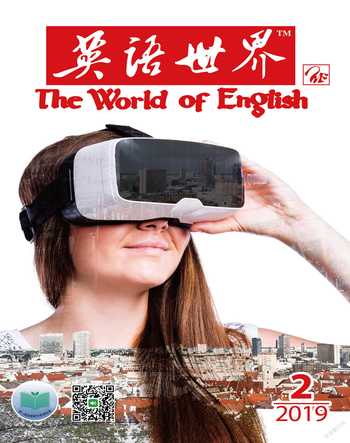用虚拟现实技术挽救连体女婴
2019-09-10彼得·霍利
彼得·霍利
During an 18-year career in medicine, Daniel Saltzman—the chief of pediatric surgery at University of Minnesota Masonic Children’s Hospital—has grown accustomed to looking at X-rays as if they were imperfect road maps of the human body.
He compares this exercise to looking at a two-dimensional traffic map on your smartphone and thinking about that image in three-dimensional terms in your mind.
Like any other road map, an X-ray image is an incomplete reduction of reality that can misrepresent challenges or include distortions, which explains why, even in 2017, high-stake surgeries can involve a shocking degree of guesswork1 and improvisation2.
“That’s why medicine is still an art as much as a science,” Saltzman told The Washington Post.
For decades, increasingly sophisticated imaging techniques have allowed doctors to peer into the human body before they cut it open, reducing uncertainty and helping them prepare for complicated procedures. Now, advances in virtual reality may flip that dynamic on its head, allowing doctors to confront the unknown before they even enter the body.
The latest evidence of this revolutionary shift in health care is the successful separation of two conjoined newborn sisters in Minnesota. Until their separation in May, Paisleigh and Paislyn Martinez were attached from their lower chest to their bellybuttons—a condition known as thoraco-omphalopagus. Both babies survived the dangerous, nine-hour procedure, a development that Saltzman and other surgeons involved link directly to their use of virtual reality before surgery.
Separating conjoined twins is a risky procedure, though survival rates differ depending on how the siblings are connected and which organs they share, according to the University of Maryland Medical Center. The Medical Center notes that twins “joined at the sacrum at the base of the spine have a 68 percent chance of successful separation, whereas, in cases of twins with conjoined hearts at the ventricular3 (pumping chamber) level, there are no known survivors.” In the latter case, the hearts are completely joined.
Experts said they were unaware of any other example of virtual reality being used to prepare for the separation of twins partially conjoined at the heart. Virtual reality has been used to assist in the separation of twins conjoined at the head on three occasions, two of which were carried out by Housing and Urban Development Secretary Ben Carson4, experts said.
Anthony Azakie—chief of pediatric cardiac surgery and co-director of the Heart Center at the University of Minnesota Masonic Children’s Hospital—called the university’s procedure a “once-in-a-lifetime event.”
Using goggle-like virtual reality glasses a month before surgery, Saltzman, Azakie and their team were able to explore a 3-D model of the twins’ hearts, virtually embedding themselves inside the walnut-sized organs as if the infant’s anatomy had been blown up5 to the size of a living room.
“It’s completely surreal and the resolution is unbelievable,” Azakie said. “The details are absolutely superb.”
The experience was not only riveting6, but revelatory7, doctors said, so much so that the stunned surgeons decided to alter their entire operative strategy. Within minutes after putting on the glasses, Saltzman and Azakie discovered something unexpected: new connective tissue—a “bridge”—linking the girls’ intertwined hearts, one of which had become heavily reliant upon the other to filter impurities and remain beating because of a severe congenital heart defect.
That defect meant that the lives of both babies were in jeopardy and doctors would have to conduct the surgery several months early, before the twins were as robust and healthy as doctors had hoped they’d be.
Standing inside the 3-D rendering of the infants’ hearts, the challenge before the physicians was daunting. They realized that improperly severing that connection could lead to the twins bleeding to death. Placing pressure on the hearts could cause blood loss or arrhythmia so severe the organs stopped beating entirely. They needed to find a way to navigate around the connection that didn’t damage each delicate organ.
The team members interacted with the 3-D model using a “track system” that allowed them to turn their heads without distortion. Doctors said the ease of the virtual interaction helped the team arrive at a simple, yet elegant solution, which they drew up on a whiteboard moments later. The surgeons decided to flip the babies around on the operating table so that the procedure occurred from the opposite angle. In the end, doctors said, the straightforward solution to a complicated quandary may have saved the twins’ lives.
“In our line of work—especially in pediatric cardiac surgery—it’s important that one is able to think on their feet and plan for the unexpected,” Azakie said. “The imaging helped us prepare by developing an approach in the event that we came across something we didn’t expect.”
To create the virtual model of the infants’ hearts, Saltzman and Azakie and other team members partnered with the University of Minnesota’s Earl E. Bakken Medical Devices Center, where experts used software to turn MRI’s and CT scans from both infants into a detailed virtual model. The university’s Visible Heart Lab also created a 3-D printed model of the hearts using a printer purchased online for $300.
Two months after their separation, the twins are still recovering, but doctors say that they’ll lead healthy, independent lives, with a scar on their chests the only evidence that they were ever conjoined in the future.
“Separating these infants was no small feat,” Saltzman said. “The fact that we got to do it using virtual reality for direct patient care makes that feat8 truly incredible.”
丹尼爾·萨尔茨曼,现任明尼苏达大学共济会儿童医院小儿外科主任。在长达18年的从医生涯中,他早已习惯将X光片视为不完美的人体路线图。
他将这种诊断过程比作看智能手机上二维的交通地图时在脑海中构思出相应的三维立体结构。
如同其他地图一样,X光影像是对人体真实结构的不完整压缩,会歪曲难点或导致失真。这就解释了为什么即使在2017年,高风险手术仍然需要程度惊人的猜测及应变能力。
萨尔茨曼接受《华盛顿邮报》采访时称:“这就是医学既是科学又是艺术的原因所在。”
数十年来,日趋精细的成像技术使医生在开刀手术前便能窥探人体,以降低不确定性并帮助他们为复杂的术程做准备。而今,虚拟现实技术的进步有望彻底颠覆这种状态,让医生在给病人手术之前就能直面未知。
医疗卫生领域这一革命性转变的最新例证,便是明尼苏达州新生连体女婴的成功分离。佩斯莉·马丁内斯和佩斯琳·马丁内斯在5月被分离之前,从下胸腔到肚脐部位都连在一起,这种疾病被称为胸脐联胎。经过9个小时惊险的手术,这两个婴儿存活了下来。萨尔茨曼和其他参与手术的外科医生认为这一进展的取得与术前运用虚拟现实技术息息相关。
马里兰大学医学中心的研究显示,尽管连体双胞胎的存活率取决于连体的方式及共享的器官,但分离连体双胞胎是一项高风险的手术。该医学中心指出:“成功分离脊柱底部骶骨处相连的双胞胎的机率为68%,但在心室(泵室)层面上心脏相连的双胞胎还没有被成功分离的存活者。”后一种情况中,两颗心脏是完全连在一起的。
专家表示,他们不知道还有其他关于虚拟现实技术用于分离心脏连体双胞胎术前准备的案例。专家称,虚拟现实技术已三次协助分离头部连体双胞胎,其中两次是由住房和城市发展部部长本·卡森完成的。
明尼苏达大学共济会儿童医院小儿心脏外科主任、心脏中心联席主任安东尼·阿扎基说,大学开展的这次手术可谓是“千载难逢”。
术前一个月,萨尔茨曼、阿扎基及他们的团队便戴上外观类似护目镜的虚拟现实眼镜,查看这对连体双胞胎心脏的三维模型,将他们自己虚拟地置入婴儿核桃般大小的器官中,婴儿身体结构仿佛扩大到一间客厅那么大。
阿扎基说:“这完全超现实,分辨率也令人难以置信,细节展现绝对一流。”
医生们表示,这种体验不仅吸引人,也颇具启发性,以至于他们惊得目瞪口呆,决定完全推翻之前设想的手术方案。因为就在戴上眼镜的几分钟之内,萨尔茨曼和阿扎基便发现了意想不到的情况:新的结缔组织,像一座“桥梁”连接着两个女婴交织相连的心脏,其中一颗心脏有严重的先天性缺陷,很大程度上依赖于另外一颗来过滤杂质和维持心跳。
这个缺陷意味着两个婴儿的生命已陷入危险的境地,医生们原先设想双胞胎几个月后变得强健再手术,现在不得不提前手术。
置身于婴儿心脏的3D透视图中,医生所面临的挑战让人望而生畏。他们意识到,切断两颗心脏间的联系,如操作不当可能会导致双胞胎大出血死亡,而给心脏加压则可能引发严重的失血或心律失常,以致心跳完全停止。他们需要找到一种可以小心绕过两颗心脏的相连部位而又不伤害任何一个脆弱器官的方法。
利用“跟踪系统”,团队成员即使转动头部,眼前的景象也不会扭曲变形。医生说,虚拟交互的便利就在于帮助团队稍后在白板上草拟出了一种简单却巧妙的解决方案。外科医生们决定将婴儿在手术台上的位置完全翻转过来,从反方向进行手术。最后,医生表示,应对复杂的困境,简单直接的方案却能挽救这对双胞胎的生命。
阿扎基说:“在我们这行,尤其是小儿心脏手术领域,能够独立思考、防患未然是非常重要的。有了成像技术,我们可以为意外情况制订解决预案,做到有备无患。”
为了创建连体婴儿心脏的虚拟模型,萨尔茨曼、阿扎基及其他团队成员与明尼苏达大学厄尔·E.巴肯医疗器械中心进行合作。在那里,专家们使用软件将连体婴儿的核磁共振及CT扫描的影像转化为一个精细的虚拟模型。大学的可视化心脏实验室则利用300美元网购的打印机打印出了这对连体婴儿心脏的3D模型。
分离术后两个月,两个女婴仍在康复中,但医生们表示她们将过上健康、独立的生活,只有胸前的伤疤是她们曾经连为一体的唯一证据。
萨尔茨曼说:“分离这对婴儿本非易事,而我们使用虚拟现实技术直接参与治疗患者更令这一壮举不可思议。”
(译者单位:山东省文登整骨医院)
